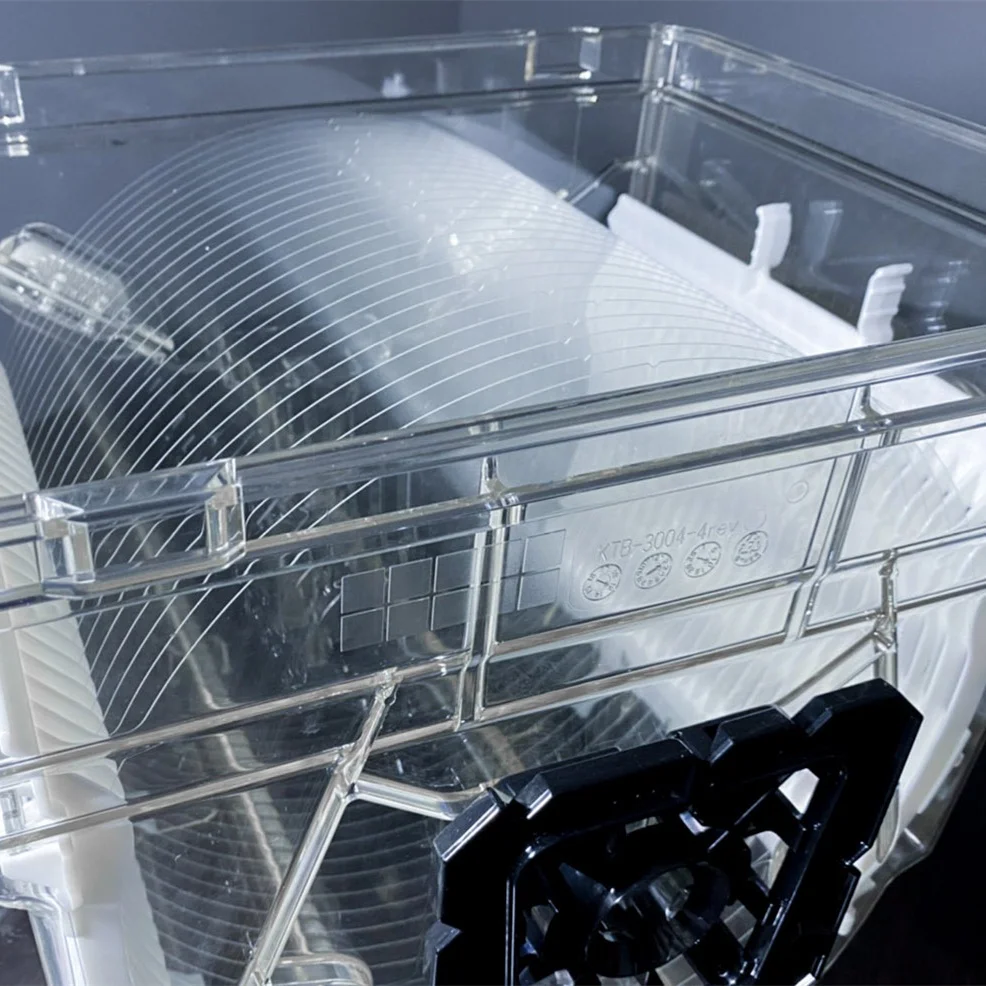Procurement Perspective on Sapphire Wafers
For procurement professionals in semiconductor, LED, or optoelectronic manufacturing, selecting the right sapphire wafer is critical. While single-side polished (SSP) wafers may seem sufficient, 12-inch double-side polished (DSP) sapphire wafers provide a counterintuitive advantage: better flatness, TTV, bow, warp, and TIR, combined with lower total cost.
Understanding these benefits can help procurement teams optimize total cost of ownership, minimize breakage, and ensure consistent wafer quality.
DSP vs SSP – Key Differences for Large-Diameter Wafers
Single-Side Polished (SSP) Sapphire Wafers
Only the front surface is polished to optical quality.
The back surface is lapped or roughly polished.
Prone to asymmetric stress, higher bow and warp, and uneven thickness.
Double-Side Polished (DSP) Sapphire Wafers
Both surfaces are polished, creating mirror-like finish.
Stress is balanced across the wafer, improving flatness, TTV, bow, warp, and TIR.
More stable for handling large-diameter wafers like 12 inches.
Why DSP Wafers Outperform SSP Wafers
1. Superior Flatness and TTV
DSP balances stress across both sides, minimizing bow and improving flatness.
TTV is tighter on DSP wafers due to removal of residual roughness on the backside.
Better flatness reduces defects and improves yield in wafer processing.
2. Reduced Bow and Warp
SSP wafers often bend or twist due to backside roughness.
DSP wafers maintain lower warp and bow, enhancing stability during transport and automated handling.
3. Improved TIR for Clamping Stability
Smooth, parallel surfaces on DSP wafers ensure accurate TIR measurements.
Reduces tilt and alignment errors during wafer chucking, improving process reliability.
DSP Wafers Can Be More Cost-Effective Than SSP
Higher SSP Costs in Practice
SSP wafers require specialized fixtures for support due to rough back surface.
Higher risk of breakage and scrap during handling.
Extra labor and process control measures increase costs for large 12-inch wafers.
DSP Reduces Hidden Costs
Balanced stress and lower warp reduce breakage.
Higher yield compensates for additional polishing step.
Total cost of ownership is lower for 12-inch DSP wafers than SSP wafers.
Procurement Recommendations
Procurement teams should consider the following:
Select 12-inch DSP sapphire wafers for superior flatness, TTV, bow, warp, and TIR.
Focus on wafers that provide high yield and low breakage for long-term cost savings.
Evaluate suppliers’ ability to consistently deliver DSP wafers with tight specifications.
Summary Table – DSP vs SSP for 12-Inch Sapphire
| Parameter | SSP | DSP |
|---|---|---|
| Flatness | Moderate | High |
| TTV | Higher variation | Tighter control |
| Bow | Higher | Lower |
| Warp | Higher | Lower |
| TIR | Less accurate | More accurate |
| Yield | Lower | Higher |
| Breakage Risk | Higher | Lower |
| Total Cost of Ownership | Higher | Lower |
For procurement teams, 12-inch DSP sapphire wafers offer a unique combination of superior geometric performance and lower total cost. Choosing DSP wafers reduces defects, improves yield, and ensures stable, reliable wafer handling in production.

